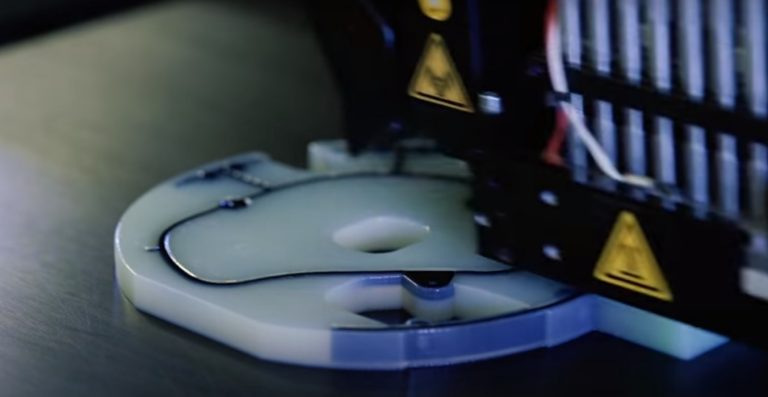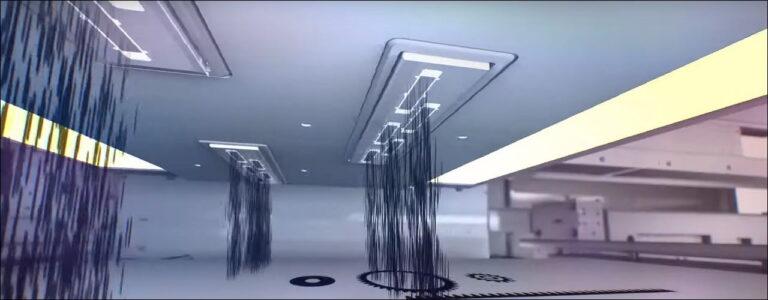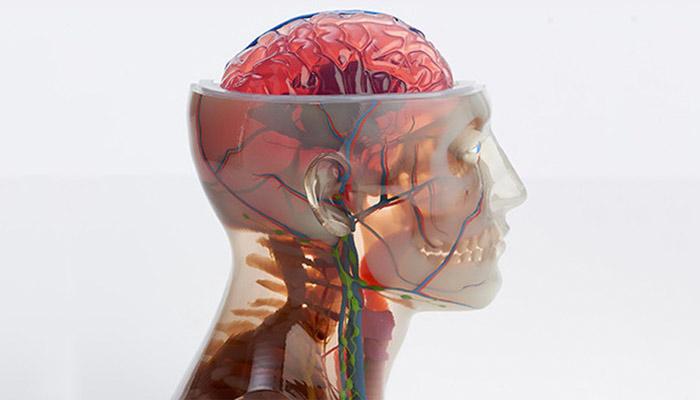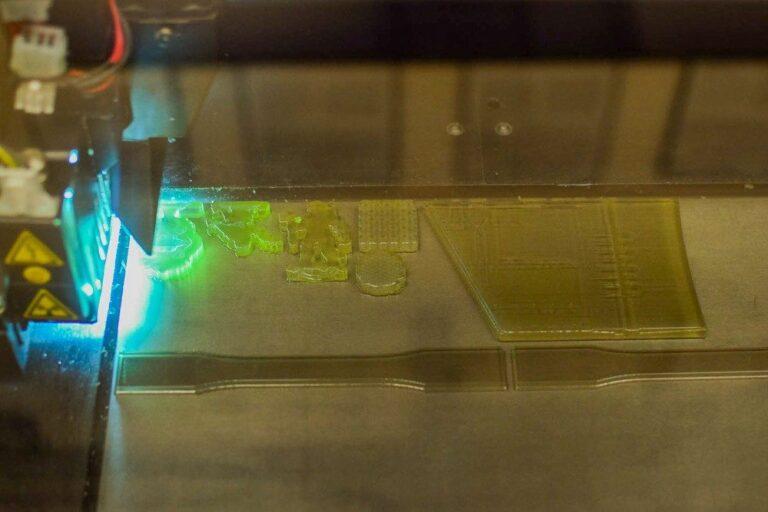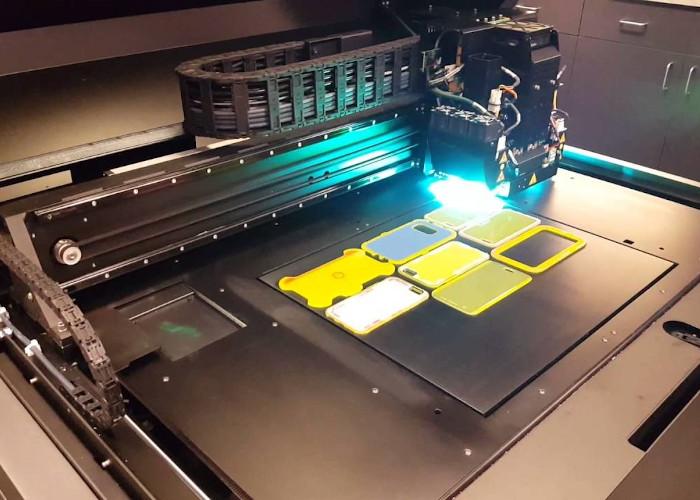Material Jetting: A Comprehensive Definition and Working Principle
Introduction to Material Jetting Technology
Material Jetting Definition: this is a versatile and innovative 3D printing technology that uses an inkjet printhead to selectively jet and cure materials layer by layer. This technology has the ability to create complex geometries with high accuracy and resolution, making it an ideal solution for a wide range of applications.
Material Jetting technology works by jetting small droplets of material onto a build platform and curing them using UV light. The printhead moves across the build platform, depositing material layer by layer until the 3D model is complete. This technology is commonly used in the production of dental models, jewelry, and other intricate parts.
The advantages of Material Jetting technology include its ability to produce high-quality parts with exceptional surface finish, accuracy, and resolution. It is also capable of producing parts with multiple materials and a wide range of colors. However, this technology has some limitations, including slow printing speeds and limited build volume.
Material Jetting technology will be explored in this article. It will cover working principle, materials used, advantages, and disadvantages. It will also discuss applications in various industries and tips to optimize the process. Future prospects for this innovative technology will also be discussed. By the end of this article, readers will have a comprehensive understanding of Material Jetting technology. They will also learn about its potential applications in additive manufacturing.
Overview of Material Jetting Technology
Material Jetting enables intricate and detailed 3D printing. It’s an additive manufacturing process. The printer deposits material droplets layer by layer, and uses various techniques like UV radiation or heat to harden the material.
Making a digital 3D model and loading it into the printing software are the first steps in the Material Jetting process. The printer’s printhead applies the material layer by layer in a predetermined pattern to the build platform. A UV light cure process then hardens and fuses the material to the prior layer.
Material Jetting tech can make complex geometries with high accuracy and resolution. It’s perfect for making prototypes, models, and components with tiny details. Elaborate designs can also be achieved through Material Jetting technology. It is one of the main benefits of this technology. Furthermore, Material Jetting enables the printing of several materials, enabling the production of parts with various finishes, textures, and characteristics.
Material Jetting technology does, however, have several drawbacks. For instance, it may be slower and more expensive to use than other 3D printing methods. The build volume may be limited. The materials may not be as durable. These limitations are in comparison to other 3D printing technologies.
In general, Material Jetting Technology is a cutting-edge and promising advancement in additive manufacturing. Material jetting technology can revolutionize many industries. It can create intricate and accurate parts. It has great accuracy and resolution. Industries that can benefit from it include art, design, medicine, and dentistry.
Comparison with Other Additive Manufacturing Technologies
When it comes to additive manufacturing, there are several different technologies available, each with its own strengths and weaknesses. This section compares Material Jetting with other main additive manufacturing technologies. These technologies include Fused Deposition Modeling (FDM), Selective Laser Melting (SLM), and Digital Light Processing (DLP).
The deposition of melted thermoplastic filaments extruded through a heated nozzle involves FDM technology. Compared to Material Jetting, FDM is generally faster and more cost-effective, but it has lower resolution and accuracy. Additionally, FDM parts are often less smooth and require more post-processing to achieve a finished look.
SLM technology uses a laser to melt and fuse metallic powders layer by layer to create parts. Industries commonly use this technology in aerospace and medical applications where high strength and precision are critical. However, Material Jetting is faster and less expensive than SLM, and it can work with a wider range of materials beyond just metallic materials.
DLP technology uses a light projector to cure liquid resin layer by layer, creating parts with high resolution and accuracy. Like Material Jetting, DLP is capable of producing intricate geometries with exceptional detail. However, DLP parts can be brittle and have lower mechanical strength compared to Material Jetting parts. Each additive manufacturing technology has its own advantages and disadvantages. The best choice depends on the project’s specific requirements. Material Jetting is ideal for complex geometries with high accuracy and resolution. It’s useful in industries like dentistry, jewelry, and art.
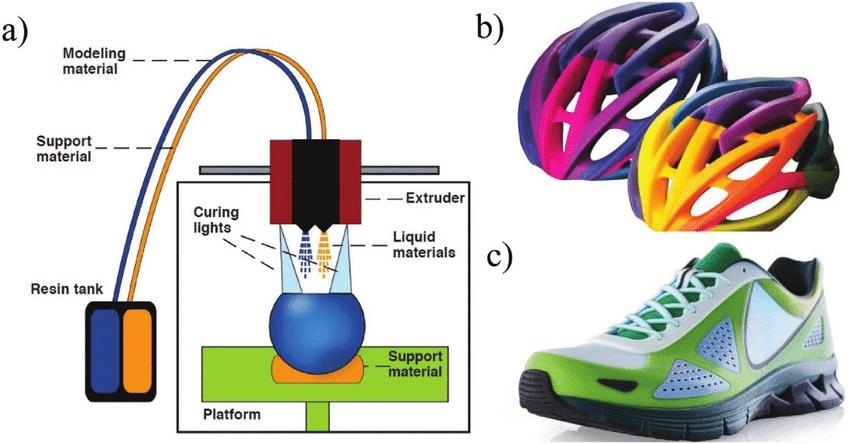
Working Principle of Material Jetting
Material Jetting is an additive manufacturing process that uses drop-on-demand (DOD) technology to create parts layer by layer. The working principle of Material Jetting involves the deposition of tiny droplets of photopolymer material from an inkjet printhead. This printhead moves back and forth over the build area, selectively depositing droplets of material onto the build platform.
The inkjet printhead is a critical component of the Material Jetting process. It contains an array of nozzles, each of which can be independently controlled to eject droplets of material. The printhead is capable of depositing material with a resolution as fine as 16 microns, making it ideal for creating highly detailed parts with complex geometries.
The DOD technology used in Material Jetting allows for precise control over the size and placement of each droplet of material. The material droplets are deposited in a highly controlled manner, which ensures that each layer is accurate and uniform. This level of precision allows Material Jetting to produce parts with exceptional surface quality and dimensional accuracy.
Material Jetting is an additive manufacturing technology. It can create complex geometries with accuracy. DOD technology and inkjet printhead make it precise. Material Jetting is popular in many industries. It can create functional prototypes and custom parts.
Drop on Demand (DOD) Technology
DOD technology uses precise droplet ejection to create 3D prints. It creates pressure pulses to force liquid material out of the nozzle. The DOD technology deposits the droplets layer by layer to create the object. A wider range of materials can be used with DOD technology. It can handle viscous or solid materials that it can melt and extrude. DOD technology has a reputation for its high precision and accuracy. It’s ideal for producing intricate and complex geometries with fine details.
Inkjet Printhead
Inkjet Printhead technology uses droplets of liquid material to create 3D objects. The printhead dispenses small droplets of material onto a build platform. The material is then solidified to create the final object. This process is precise and allows for high-resolution prints.
Materials Used in Material Jetting
Material jetting technology can use a wide range of materials, including photopolymers, thermoplastics, and metals. Material jetting uses photopolymers that cure when exposed to light. Commonly used thermoplastics include ABS and nylon. Although expensive, metals like silver, gold, and platinum can also be used. Researchers are exploring ceramics and composites as potential material jetting materials. Material jetting technology’s versatility enables the use of various materials for different applications.
Photopolymers
Photopolymers are a common material used in material jetting. They are liquid polymers that solidify when exposed to UV light. They can produce high-resolution parts with fine details and smooth surfaces. Photopolymers come in various colors and can also be translucent or transparent. Some common applications include prototyping, product design, and jewelry making. The material has its drawbacks as well, such as being brittle and susceptible to UV degradation over time.
Thermoplastics
When heated, thermoplastics liquefy, and when cooled, they solidify. Material jetting technology frequently uses them because they can be melted and reformed repeatedly without undergoing any chemical changes. The thermoplastics ABS, PET, nylon, and polycarbonate are a few examples of those utilized in material jetting. These materials are ideal for a variety of applications, including prototyping, product design, and even medical and dental applications because of their great strength, durability, and chemical resistance. The tendency for thermoplastics to distort during the printing process and their relatively low heat tolerance in comparison to other materials are some drawbacks of thermoplastics in material jetting.
Other Materials
Material jetting can use not only photopolymers and thermoplastics, but also metals, ceramics, and composites. The binder mixes with these materials to make them printable and transforms them into a paste-like substance that the printhead can jet. This process allows for the creation of complex parts with different material properties. However, processing these materials can be costlier and more complex compared to photopolymers and thermoplastics.
Advantages and Disadvantages of Material Jetting Technology
Material Jetting Technology is a 3D printing method that uses inkjet technology to build objects layer by layer. This technology has its own advantages and disadvantages.
Advantages
Material Jetting Technology allows for high accuracy and intricate detail in 3D printing. It also has the ability to use multiple materials in one print and can produce parts with high resolution and smooth surface finishes.
- high accuracy
- intricate detail
- multiple materials
- high resolution
- smooth surface finishes
Disadvantages
Material Jetting Technology can be expensive and has limited build size compared to other 3D printing technologies. It also has a slower printing speed and may require post-processing to remove support materials.
- expensive
- limited build size
- slower printing speed
- post-processing required
Applications of Material Jetting Technology
Material jetting technology has a wide range of applications in various fields. From rapid prototyping to low-volume production, medical and dental applications, aerospace and defense industries, and even art and design. Let’s explore each of these applications in more detail.
Rapid Prototyping
A popular use of material jetting technology is rapid prototyping. It makes it possible to swiftly and precisely produce physical prototypes from digital designs. This technology is capable of creating complicated and highly detailed models in a variety of geometries, sizes, and shapes.
Companies can use material jetting technology to build scale models of new car designs for testing their aerodynamics and general performance. In the medical field, similar technology can create personalized implants and surgical equipment. By avoiding the need for numerous design iterations and shortening the time it takes to bring a product to market, rapid prototyping can save time and money.
Low-Volume Production
Another significant application of material jetting technology is low-volume manufacturing. Material jetting is perfect for small-batch manufacturing runs because it can create complicated parts of high quality and accuracy. Without the use of costly molds or equipment, producers may build unique parts fast and easily.
Dental implants are one product that is produced in low volume using material jetting. Without the use of expensive and time-consuming traditional molding procedures, material jetting technology enables the production of highly customized dental implants that perfectly fit each individual patient.
The manufacturing of aeronautical components is another illustration. Material jetting is ideal for low-volume production runs of aerospace components like brackets, housings, and other small parts because it allows for the accurate manufacture of complex pieces.
Overall, material jetting technology is a desirable alternative for low-volume manufacturing across a variety of industries due to its capacity to swiftly and affordably generate high-quality products.
Medical and Dental Applications
Material jetting technology has a wide range of applications in the medical and dental fields. It can be used to create accurate and intricate 3D models of medical implants, dental prosthetics, and even surgical guides. One example of its use in dentistry is the production of dental models for orthodontic treatments, allowing dentists to create custom aligners for their patients. Material jetting can use in medicine to create patient-specific models of organs for surgical planning and simulation. The technology can also use to create drug delivery systems and tissue scaffolds for regenerative medicine applications. Overall, material jetting technology is an important tool in advancing medical and dental treatments with its ability to produce highly detailed and personalized models.
Aerospace and Defense Applications
Material jetting technology has found significant applications in the aerospace and defense industries, where precision, speed, and reliability are critical factors. Jetting materials such as metals, ceramics, and polymers have enabled the creation of complex parts and components with intricate designs that are otherwise difficult or impossible to produce using traditional manufacturing techniques. These components are often used in critical systems, including engines, avionics, and weapon systems.
One example of the use of material jetting in the aerospace industry is the production of turbine blades for jet engines. The jetting process allows for the creation of complex geometries, including cooling channels, which enhance the efficiency and durability of the blades. Another example is the creation of lightweight, high-strength parts for aircraft structures, such as brackets and supports.
In the defense industry, material jetting is used to produce parts for military vehicles, weapons, and communication systems. The technology’s ability to quickly create highly customized parts on demand makes it valuable in applications where traditional manufacturing techniques are not feasible due to cost, time, or other constraints.
Overall, the use of material jetting in aerospace and defense applications offers a range of benefits, including improved performance, reduced weight, and increased efficiency. With the continued development and refinement of this technology, its impact on these industries is expected to grow even further in the future.
Art and Design
The use of material jetting technology has created new opportunities for designers and artists to easily produce elaborate and complicated structures. They can print intricate models in high resolution using a variety of colors and materials, such as ceramic, metal, and plastic. Additionally, this technology has transformed the fashion industry by enabling designers to print unique garments and accessories.
The “Strati,” a 3D-printed electric automobile made by Local Motors, is one of the most notable instances of material jetting in art and design. The car has a distinctive design that can’t be produced using conventional production methods. The car’s interior is printed using a mixture of thermoplastic and carbon fiber-reinforced material, while the outside is comprised of carbon fiber and ABS plastic.
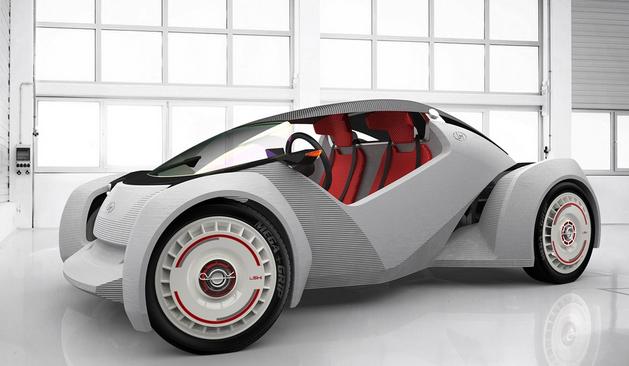

Intricate sculptures, jewelry, and other decorative things are also made using material jetting. For instance, the method is used by a Dutch artist by the name of Olivier van Herpt to produce beautiful ceramic vases with detailed motifs that are not possible to make using conventional pottery techniques. Additionally, complex and lightweight structures for building facades and interior design have been made using material jetting.
To sum up, material jetting technology has completely changed how designers and artists create and manufacture their works. They have been able to push the limits of design and realize their creative visions thanks to it.
Factors Affecting Material Jetting Quality and Performance
Material jetting quality and performance depends on several factors, including material properties, printer settings and parameters, and post-processing techniques. Material properties such as viscosity, surface tension, and curing behavior can affect the flow of the material and the final part quality. Printer settings and parameters such as layer thickness, print speed, and temperature can impact the print resolution, accuracy, and mechanical properties of the part. Post-processing techniques such as cleaning, sanding, and coating can further enhance the surface finish and mechanical properties of the printed part. It is important to carefully consider and optimize these factors to achieve the desired quality and performance of the printed parts.
Material Properties
Material properties are a crucial factor affecting the quality and performance of material jetting. The viscosity, surface tension, and other properties of the material used in the process can significantly impact the printing resolution, accuracy, and strength of the final product. The material’s melting temperature, chemical composition, and molecular weight distribution can also affect the material’s printability and adhesion to the build platform.
Additionally, the particle size and distribution of the material can impact the smoothness of the surface finish, as larger particles can lead to rougher surfaces. The color, translucency, and other aesthetic properties of the material can also affect the appearance of the printed object. Therefore, choosing the right material with the desired properties is essential for achieving the desired quality and performance in material jetting.
Printer Settings and Parameters
The printer settings and parameters play a crucial role in the quality and performance of material jetting. The printer settings include the nozzle diameter, layer thickness, and print speed, among others. The nozzle diameter affects the resolution of the final print, while the layer thickness determines the smoothness of the surface. The print speed can affect the accuracy of the printed parts. The parameters, on the other hand, include the material viscosity, temperature, and pressure. The viscosity affects the flow rate of the material, while the temperature and pressure affect the quality and accuracy of the print. Proper adjustment of these settings and parameters can improve the quality and performance of the material jetting process.
Post-Processing
Post-processing techniques are an important factor affecting the quality and performance of material jetting. These techniques are applied after the jetting process to improve the final part’s properties. One common technique is thermal treatment, which involves exposing the part to high temperatures to improve its mechanical properties. Another technique is surface finishing, which involves smoothing or texturing the surface of the part to improve its appearance or performance. Additionally, chemical treatments can be used to alter the surface properties of the part, such as increasing its adhesion to other materials. Proper post-processing can greatly enhance the quality and functionality of parts produced through material jetting.
Future Developments and Trends in Material Jetting Technology
Technology for material jetting has advanced significantly recently and is predicted to do so even further. The potential uses of this technology are constantly growing because to developments in new materials and enhanced printing techniques. Numerous industries, including medical, electronics, and the automobile, are seeing new opportunities as a result of the capacity to print intricate and practical products with a high degree of precision and accuracy. This technology has the potential to transform production procedures and spur fresh developments in engineering and design as it advances. It will be interesting to watch where this technology takes us in the years to come. The future of material jetting technology is promising.
Emerging Materials and Improved Printer Technology
Emerging materials, improved printer technology, and new applications are the main drivers of future developments and trends in material jetting technology. With the advancement of nanotechnology and materials science, new materials such as graphene and carbon nanotubes are being developed, which can enhance the properties of printed parts. Improved printer technology, including faster printing speeds and higher precision, enables the production of more complex and intricate structures.
New Applications
Material jetting technology has the potential to revolutionize various industries and create new opportunities for innovation and creativity. The technology is being used to print functional organs such as liver and heart tissues in the biomedical field. Additionally, the electronics industry is utilizing material jetting to print conductive materials and circuitry. These advancements are a result of the rapid evolution of material jetting technology, with new materials, improved printer technology, and new applications being developed.
Conclusion
In conclusion, material jetting is a versatile additive manufacturing technology that offers a range of benefits for various industries. Its ability to print complex geometries, use a variety of materials, and achieve high accuracy and resolution makes it a popular choice for applications ranging from biomedical to electronics. As the technology continues to evolve, with the development of new materials and improved printer technology, we can expect to see even more innovative applications emerge.
Some key takeaways from this post include the importance of material properties, printer settings, and post-processing techniques in achieving high-quality and efficient material jetting results. Additionally, emerging materials, such as biodegradable and conductive materials, present exciting opportunities for new applications and advancements in the field.
Moving forward, it will be important for researchers and manufacturers to continue exploring the potential of material jetting technology and pushing the boundaries of what is possible. This includes developing new applications and integrating the technology into existing production processes to streamline workflows and increase efficiency. Ultimately, material jetting has the potential to revolutionize manufacturing and create new possibilities for innovation and creativity in a variety of industries.
How to improve material jetting technology for more complex designs?
- Evaluate the Current State of Material Jetting Technology
Conduct research to understand the limitations of current material jetting technology.
- Identify the Key Challenges
Identify the key challenges that must be addressed to improve material jetting technology for more complex designs.
- Identify Areas for Improvement
Evaluate the areas where improvements can be made, such as software, hardware, and materials.
- Develop a Strategy
Develop a strategy to address the key challenges and areas for improvement.
- Focus on Material Properties
Develop materials that are suitable for more complex designs and that can be jetted with precision.
- Optimize Printer Settings and Parameters
Fine-tune printer settings and parameters to improve the precision and accuracy of the material jetting process.
- Explore New Post-Processing Techniques
Explore new post-processing techniques that can improve the quality and performance of printed parts.
- Collaborate and Share Knowledge
Collaborate with experts in the field and share knowledge to advance the technology and improve the quality of material jetting for more complex designs.
FAQs
Material jetting is an additive manufacturing process that uses a print head to deposit droplets of material layer-by-layer to create a 3D object.
A wide range of materials can be used in material jetting, including plastics, metals, ceramics, and even biological materials like living cells.
Material jetting offers high resolution and precision, making it ideal for creating complex designs with fine details. However, it is generally slower and more expensive than other 3D printing technologies like FDM or SLA.
Material jetting can be used for small-scale production runs, but it is not yet practical for mass production due to its slower speed and higher cost.
Material jetting is commonly used for creating prototypes, models, and parts for industries such as aerospace, automotive, and biomedical. It is also used for producing complex geometric structures like lattice structures and honeycomb structures.

